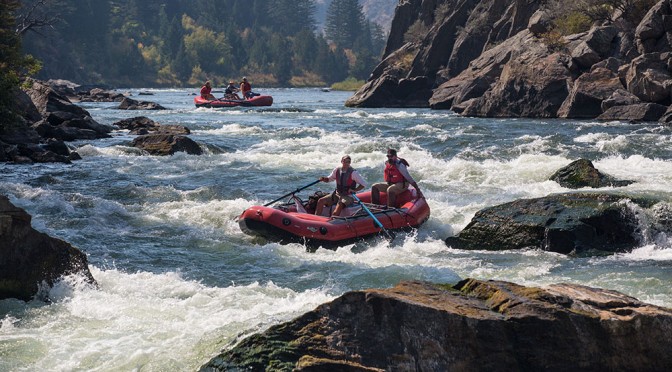by Corey Hockett
If you haven’t noticed, Montana is home to a unique and dynamic web of water. It’s likely one of the reasons you’re here, to some degree or another. Be it a meandering stream or furious, technical whitewater; whether it’s a committing excursion deep in the backcountry or a float after work—in Bozeman, there are paddling opportunities abound.
Purpose
Before shoving off, there are a few obvious questions you’re going to have to ask yourself. Two of them being, what are you interested in doing, and how are you interested in doing it? ‘Round here, there’s a river for every craft, but your experience level is going to narrow your options on where to go. For whitewater fanatics, the Gallatin, sections of the Yellowstone, and the Madison’s esteemed Bear Trap Canyon are your go-tos. If adrenaline pulsation isn’t your thing, or you’re just starting out, head out to the Jefferson or lower Madison. These waters are great for canoes, paddleboards, and a six-pack in the cooler. If you seek something between these two extremes, a float down the lower Yellowstone offers calm stretches between short bouts of big waves and fast water.
Gear
With every activity comes a spread of accessories, some of them necessary, some of them not. Don’t buy the newest whitewater getup with all the bells and whistles your first season just to show everyone how hip you look. You’ll likely be called upon to do something you have no idea how to do—and you’ll make a fool of yourself. Get some experience first, then reassess on what it is you actually need.
There are some fundamental things you needn’t leave without, however. Number one: the PFD. Do not venture on the waterways without a suitable life jacket, even if you don’t plan on wearing one. Montana law mandates one in possession, anyway—for every vessel under 16 feet, that is. Next, you’re going to have to decide what type of craft you plan on going in, and in turn, which paddle you need. Kayakers and packrafters wield double-bladed paddles, while canoeists, paddleboarders, and rafters use single-blade models.
Depending on how much water you want to run, and how often you want to do it, there are plenty of other items to add to your gear list. I never leave without a dry bag, usually filled with an extra layer, lunch, and a small repair kit. Unless you only want to float in July and August in the sunshine, you’re going to have to dress warm. A splash jacket, dry-top, or drysuit will work wonders when it comes to Montana’s frigid waters. If you’re running anything more than Class II, you should get a helmet, serrated river knife, and possibly a throw rope. We’re starting to reach superfluous territory now, but river booties and gloves are nice luxuries to have on colder days.
Game Time
When it comes time to hit the water, have a plan. No matter how mellow you anticipate the float going, it’s always good to have at least something skeletal in place. Rivers are not where you should get in over your head, ever. Booze cruises can turn into Type 3 sufferfests as fast as a canoe can tip. Scout rapids if you’re pushing your skillset or haven’t been through them before. If you’re new to a certain craft, or unfamiliar with the water, go with a partner you trust. And when testing your capability, try hard things in easy water—you’ll thank yourself when you find out that hitting your roll in the Mad Mile is much different than the college pool.
The swollen streams of spring are coming, no matter if you’re waiting through winter for them, or riding their very currents. Grab a paddle and a partner—Bozeman’s blue arteries await.

